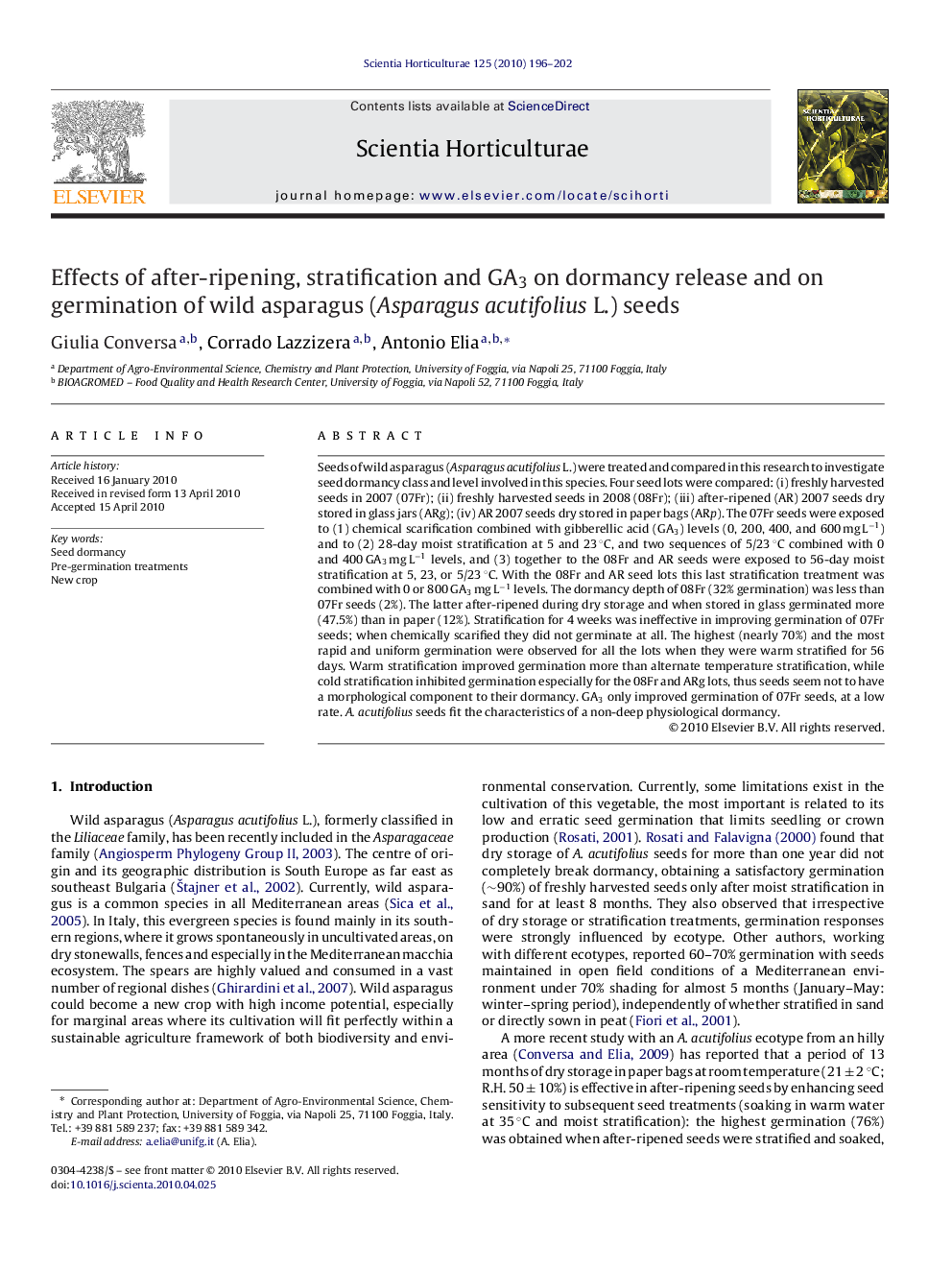| Article ID | Journal | Published Year | Pages | File Type |
|---|---|---|---|---|
| 4568658 | Scientia Horticulturae | 2010 | 7 Pages |
Seeds of wild asparagus (Asparagus acutifolius L.) were treated and compared in this research to investigate seed dormancy class and level involved in this species. Four seed lots were compared: (i) freshly harvested seeds in 2007 (07Fr); (ii) freshly harvested seeds in 2008 (08Fr); (iii) after-ripened (AR) 2007 seeds dry stored in glass jars (ARg); (iv) AR 2007 seeds dry stored in paper bags (ARp). The 07Fr seeds were exposed to (1) chemical scarification combined with gibberellic acid (GA3) levels (0, 200, 400, and 600 mg L−1) and to (2) 28-day moist stratification at 5 and 23 °C, and two sequences of 5/23 °C combined with 0 and 400 GA3 mg L−1 levels, and (3) together to the 08Fr and AR seeds were exposed to 56-day moist stratification at 5, 23, or 5/23 °C. With the 08Fr and AR seed lots this last stratification treatment was combined with 0 or 800 GA3 mg L−1 levels. The dormancy depth of 08Fr (32% germination) was less than 07Fr seeds (2%). The latter after-ripened during dry storage and when stored in glass germinated more (47.5%) than in paper (12%). Stratification for 4 weeks was ineffective in improving germination of 07Fr seeds; when chemically scarified they did not germinate at all. The highest (nearly 70%) and the most rapid and uniform germination were observed for all the lots when they were warm stratified for 56 days. Warm stratification improved germination more than alternate temperature stratification, while cold stratification inhibited germination especially for the 08Fr and ARg lots, thus seeds seem not to have a morphological component to their dormancy. GA3 only improved germination of 07Fr seeds, at a low rate. A. acutifolius seeds fit the characteristics of a non-deep physiological dormancy.
